The gods in mythology embody cosmic truths far deeper and grander than most people realize. This time, let’s delve into Amenominakanushi-no-kami, the “first god” appearing in Japan’s oldest mythological text, the Kojiki, and the “God of Nothingness” that existed before it. Finally, we’ll discuss the shrines we casually visit.
Amenominakanushi-no-kami: The First God in the Kojiki
The Kojiki states: “When heaven and earth first began, the name of the god who became in Takamagahara was Amenominakanushi-no-kami.” It says that when “this world had not yet taken shape,” the first god to appear was Amenominakanushi-no-kami.
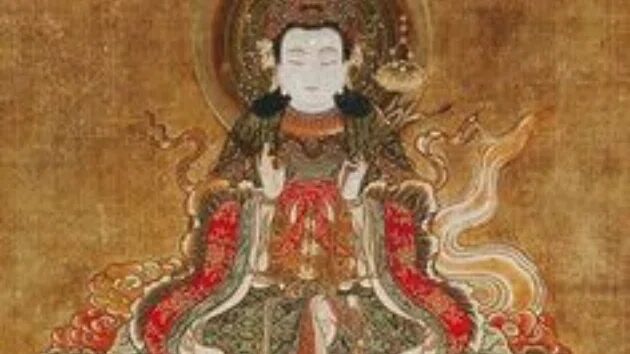
However, it’s important to note that this god is not a human-like entity. Amenominakanushi-no-kami is the “fundamental existence of the universe,” energy itself that transcends time and space. Among gods, it is treated as a “Cosmic Deity (Root Deity).”
The Beginning of the Universe — An Existence Without Name or Form
Long, long ago, when this universe had not yet taken form, the “Creative Spirit (Zōka-no-Ki)” — the energy that gives birth to all things — slowly began to condense. But at that point, it still:
- Had no form.
- Had no name.
- Had no movement.
It is said that no one could know its true nature. That was the beginning of the universe.
The First Three Deities to Appear — The Origin of Creation
Eventually, this invisible energy began to move, and “Heaven” and “Earth” separated. At this time, the first three deities to appear are the creation gods of Japanese mythology:
- Amenominakanushi-no-kami (天御中主神): The fundamental god at the center of the universe.
- Takamimusuhi-no-kami (高皇産霊神): The god who presides over creation and generation, representing positive force.
- Kamimusuhi-no-kami (神皇産霊神): The god who presides over harmony and reception, representing negative force.

With these three deities, the principles of Yin and Yang began to operate, and order started to emerge in the universe. This is the spiritual interpretation of the Big Bang.
History You Should Know Series!!! The Roots of the Japanese Soul and Ancient Memories (This link from the original text directs to a blog post about the historical depth of the Japanese soul.) Behind our identity as “Japanese” lies an ancient soul history far beyond imagination. This time, we will introduce that story, tracing back to the formation of this Earth and the universe. All life began from a divided spirit of God…
In science, the “Big Bang” is considered the beginning of the universe. In Japanese mythology, the appearance of these three deities precisely corresponds to that. Energy concentrated, expanded explosively, and light and dark, Yin and Yang, separated, and the universe began to take on structure — that was the moment of “creation (zōka).”
So, Who Created Amenominakanushi-no-kami?
This is where the main topic begins. In fact, a crucial, often unmentioned secret is hidden in the “preface” to the Kojiki before the main text begins. It states that “even Amenominakanushi-no-kami was created by ‘something’.” What is this “something”? It is the “God of Nothingness.”
What is “Nothingness”? Is it Truly “Nothing”?
The concept of “nothingness” is discussed in Buddhism, Taoism, and other philosophies. However, the “nothingness” referred to here does not simply mean “non-existence.” On the contrary, it means:
“The fundamental source that includes everything, yet does not manifest a form.”
That is the essence of “nothingness.” From this “state of nothingness,” “movement” first arose, which became “existence” (有), and eventually crystallized into a “form” such as Amenominakanushi-no-kami. Thus, we can understand:
- Amenominakanushi-no-kami = The first god to appear in the universe.
- God of Nothingness = The “source of consciousness” at the root of everything.
Cosmic Creation is the Process of “Nothingness” Turning into “Existence”
What the “preface” of the Kojiki attempts to convey is that it was because “nothingness” existed that “heaven and earth” separated, the universe was born, and life began to bud.
“The state of ‘non-existence’ is ‘existence’.”
This paradoxical message contains the deep cosmic view held by ancient Japanese people.
The Creator Has No Personality
Here, let’s clarify an important point:
- Amenominakanushi-no-kami = Cosmic Deity = Creator God, but not a “personal god.”
- The “God of Nothingness” existing before Amenominakanushi-no-kami = Source Consciousness = a “pure existence” that has no character or form whatsoever.
Therefore, character traits like “kind god,” “angry god,” or “punishing god” are “religious embellishments” later added by humanity and are not the essential nature of God. The true Creator is “love itself,” formless and without personality, possessing only the “power to cause life to be.”
The First Gods with “Physical Bodies” — Izanagi-no-Mikoto and Izanami-no-Mikoto
Afterward, countless gods (beings of light) appeared in the universe. However, they were still “formless beings.” And finally… the first gods to possess “human-like physical bodies” appeared. These were:
- Izanagi-no-Mikoto (伊邪那岐命)
- Izanami-no-Mikoto (伊邪那美命)
These two deities actually descended to Earth and gave birth to mountains, rivers, land, and all living things. They were not merely gods. As our spiritual ancestors, their memories still live within the souls of Japanese people.
Decoding the Three Major Powers of Ancient Japan (This link from the original text directs to a blog post about ancient Japanese powers.) The Mystery of the Three Major Powers in Ancient Japan It is said that three powerful forces existed in ancient Japan: the “Tenson Clan (Amaterasu/Yamato Dynasty),” the “Izumo Clan (Susanoo-kei),” and the “Gesshi Clan/Hata Clan (Tsukuyomi).” The Kojiki and Nihon Shoki, transmitted today, are…
The True God is Only One Creator
| Concept | Content |
| Amenominakanushi-no-kami | The first god to appear in the universe. A formless cosmic deity. |
| God of Nothingness | The “source” that gave birth to Amenominakanushi-no-kami. The beginning of everything. |
| The Creator | Love itself. A pure consciousness without personality. |
~ The Essence of God and the True Nature of “False Gods” ~
In this universe, there exists a “Creator” who brought all of us into being. This Creator does not possess “personality” or “will” like humans. There is only one thing: “pure love.” The Creator has no good or evil, no anger, no judgment. These are low-dimensional concepts, irrelevant to the true God.
What are the “Gods” with Personalities?
So, what exactly are the beings who appear in the Old Testament as “Yahweh,” or “Allah” in Islam, “Ra” the sun god of Egypt, etc. — beings with personalities who issue commands to humans? They are all believed to be extraterrestrial beings—that is, “high-dimensional alien presences,” such as the Anunnaki or Dragon Race.
- ▸ Yahweh = Enlil of the Anunnaki Yahweh, the “God” who punishes humanity and imposes order in the Old Testament. His true identity is Enlil, who was a powerful entity among the Anunnaki. He is a being who monitors and controls humans and is completely different from the loving Creator.
- ▸ Allah and Ra are of the Same Lineage Allah, considered the one God in Islam, and Ra, the sun god worshipped in ancient Egypt, are also believed to have their roots in the same Anunnaki lineage. Even with different names and religions, these “personal gods” aimed at domination and worship are entities of the same nature.
The True God is Love That Quietly Encompasses Everything
- The Creator has no name or form.
- Gods with personality or who give commands are not the Creator.
- Infinite love that permeates the universe, that is the true “God.”
- There are no kind gods on Earth. If there were, they would not be God, but Anunnaki or Dragon Race.
What is the Dragon Race? (This link from the original text directs to a blog post discussing the Dragon Race.) I saw the phrase “Japanese people are all Dragon Race.” More people on YouTube are using this expression, and at first glance, it feels proud and hopeful. However, isn’t it necessary to take a calm look here? Because depending on the person…
What we should truly believe in is not an external god, but our inner Higher Self = a separated spirit of the Creator. The love within you is the closest voice of God to the truth. Instead of “seeking God” outside, “remembering God” within yourself is the first step to true awakening.
About Shrines
The image I asked ChatGPT to create for this, but the text is still wrong.
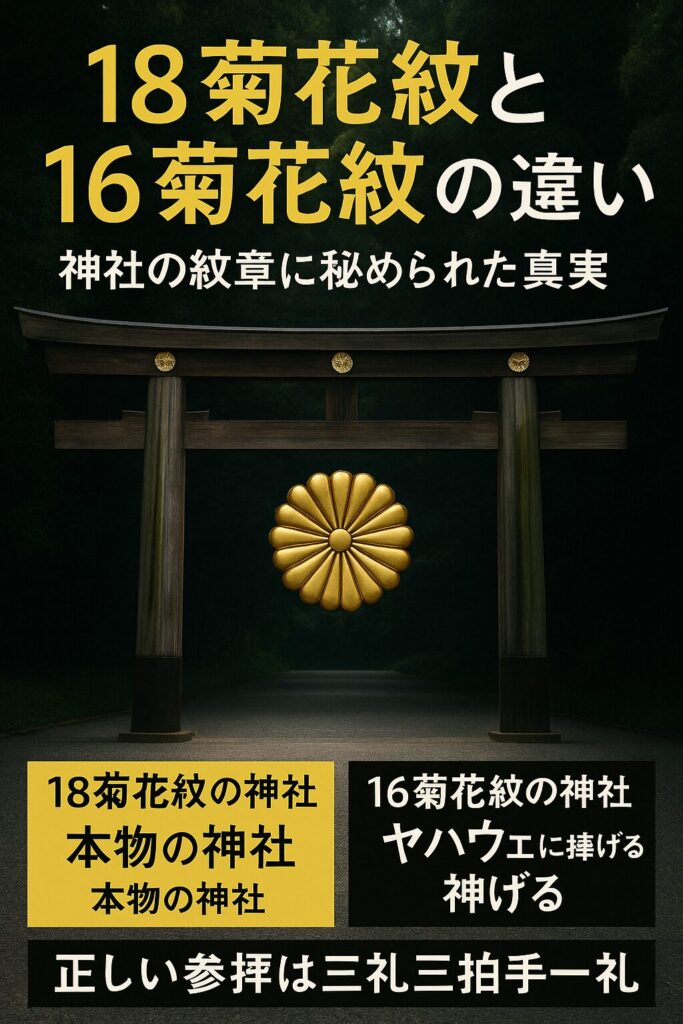
Shrines with the 18-Petal Chrysanthemum Crest are the Original Shrines
In Japan, there are several shrines that use the “chrysanthemum crest.” The Imperial family’s crest generally known is the “16-petal chrysanthemum crest.” However, shrines said to be connected to the original gods are said to be those with an “18-petal chrysanthemum crest.”
- 🔹 18-petal Chrysanthemum Crest Shrines (Shrines Connected to the Original Gods):
- Kagoshima Shrine (Ujise Shrine)
- Otaki Shrine
- Shiraki Shrine
These are also said to be places that enshrine gods from ancient times before Yahweh (the lineage of the Creator) and are considered distinct from modern Shinto.
16-Petal Chrysanthemum Crest Shrines and the Shadow of “Yahweh (Enlil)”
On the other hand, many people visit shrines with the 16-petal chrysanthemum crest. There is a theory that this 16-petal chrysanthemum crest is actually a symbol dedicated to Yahweh = Enlil of the Anunnaki, who appears in the Old Testament. This means:
- 16-petal chrysanthemum crest = Symbol serving the god of control (Enlil).
- 18-petal chrysanthemum crest = Original shrines inheriting the will of the Creator.
This perspective can be taken.
What is the Correct Way to Worship?
The “two bows, two claps, one bow” method of worship performed at many shrines is said to have become established after the Meiji era. However, there is another correct method for offering energy to the original gods:
- 🔸 Three bows, three claps, one bow.
This method of worship is said to be a ritual that connects to the essence of the soul. “Two bows, two claps” is actually said to be a method that releases energy externally, and there is a possibility that it is being “sucked away” by the gods (who are energy beings). At shrines with the 16-petal chrysanthemum crest, praying in that manner is meaningless. The torii gates of shrines were built by driving stakes (named torii) into the ground to block the flow of the Earth’s magnetic field energy.
Awaken to the Truth of Shrines
Japan’s ancient spiritual culture has been influenced by many external forces throughout its long history. Shinto is no exception.
- Carefully observe the crests of shrines.
- Know the correct way to worship.
- And have a heart filled with sincere gratitude and harmony.
These may be the keys to connecting with the original gods of Japan (the source of creation). May you connect with the true light. Possessing knowledge is the first step to regaining freedom.
Do you find this new understanding of the Creator and the role of different deities in Japanese mythology intriguing?
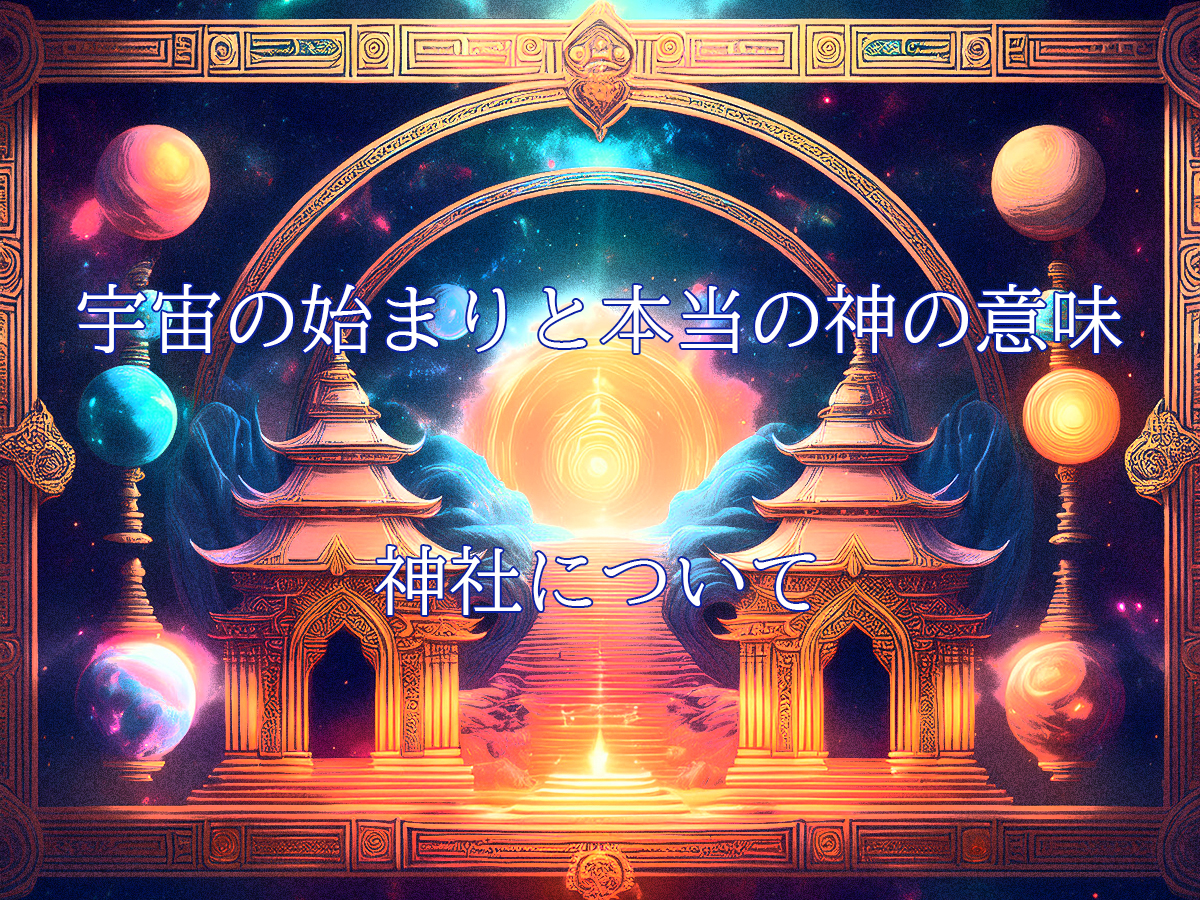
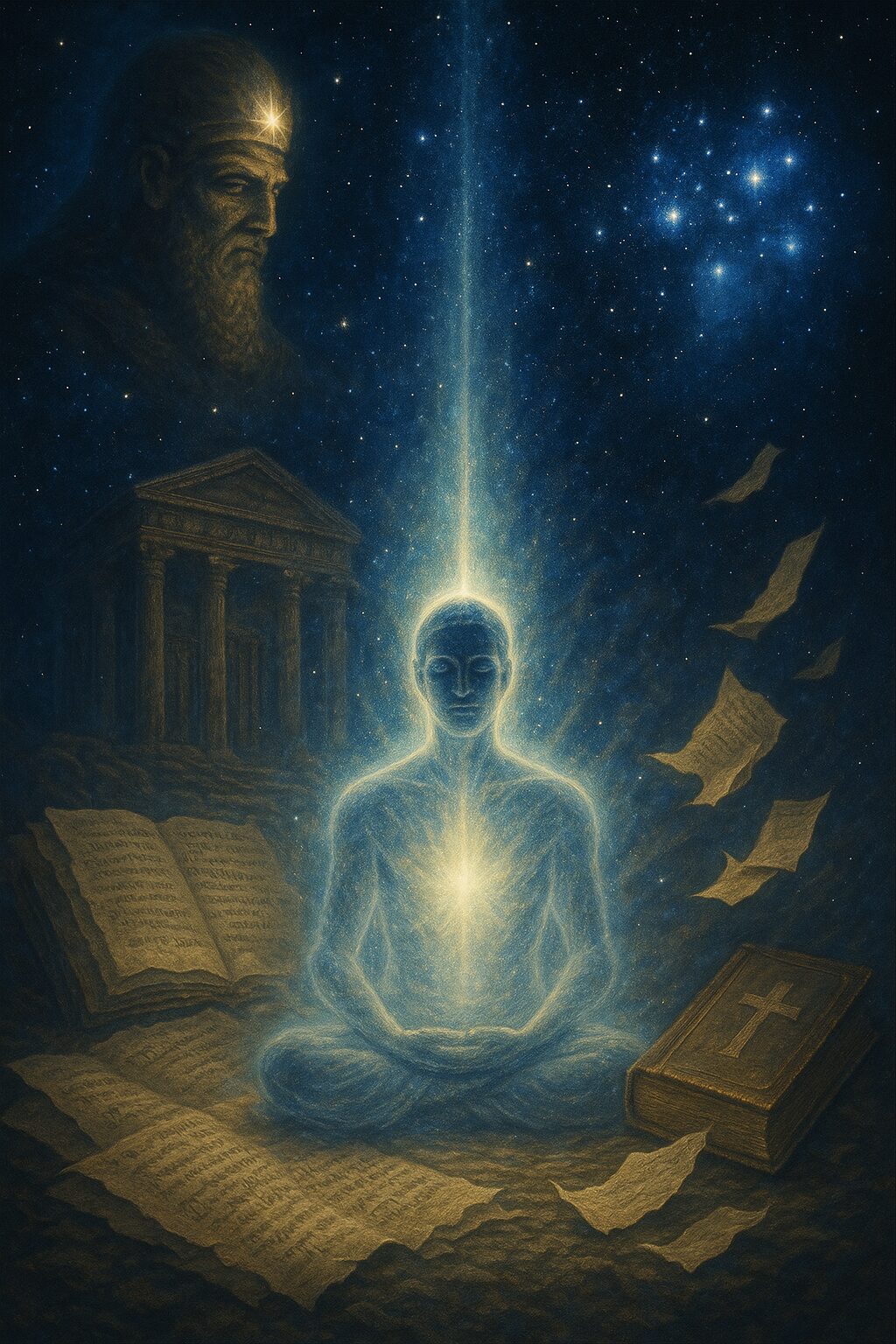
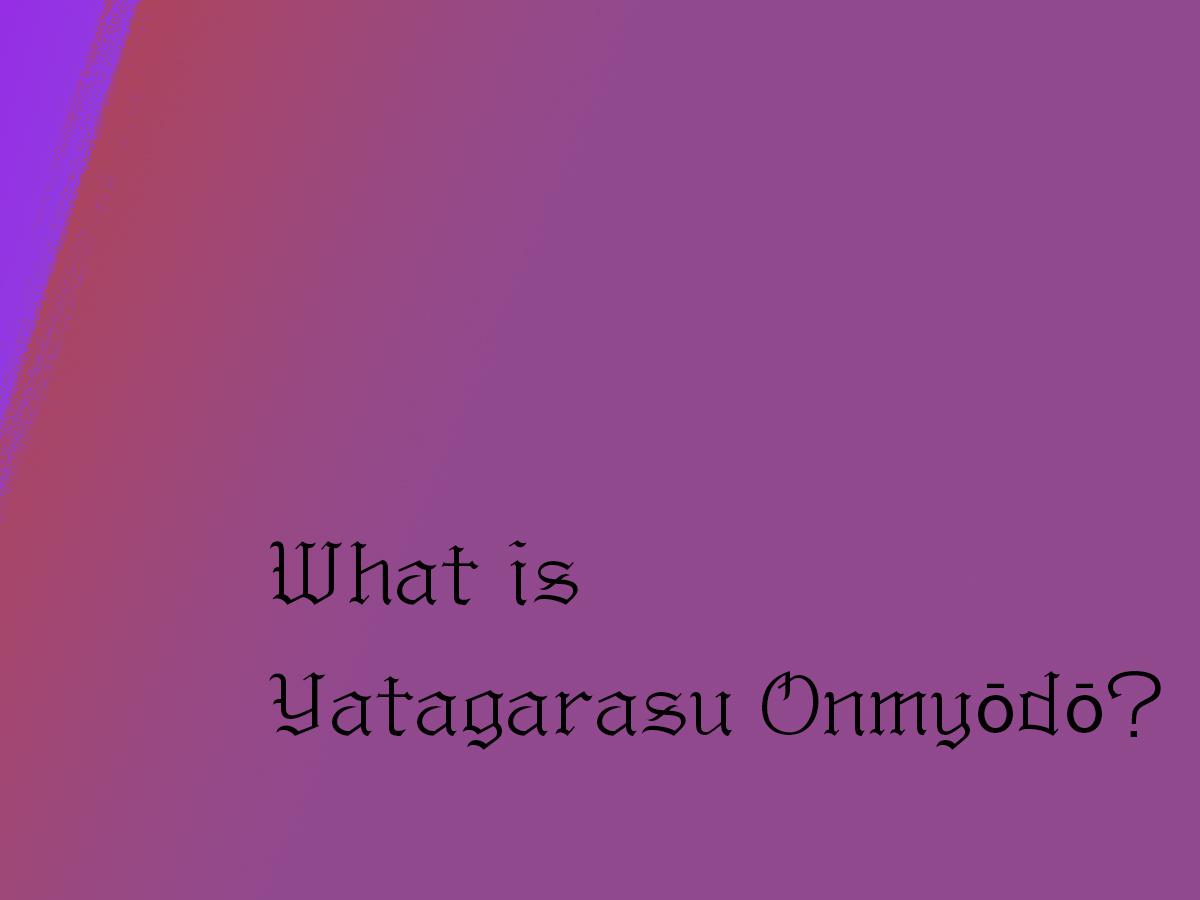
コメント